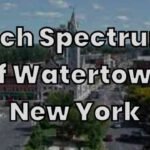Alphabet City: A Vibrant Neighborhood in New York City :Alphabet City, located on the eastern edge of Manhattan, is a historic, artistic, and culturally rich neighborhood that has evolved dramatically over the years. Nestled within the East Village, it is named after the avenues that run through it, uniquely labeled with single-letter names: Avenue A, B, C, and D. Here’s an in-depth look at what makes Alphabet City a distinctive part of New York City:
Historical Background
Alphabet City was once a gritty, working-class area known for its immigrant communities in the late 19th and early 20th centuries. It became a melting pot for immigrants from Eastern Europe, Germany, and Puerto Rico, shaping the neighborhood’s diversity. By the 1970s and 1980s, it had garnered a reputation for crime and poverty but also for its radical artistic spirit, as it became home to numerous artists, musicians, and countercultural movements. Today, it maintains its bohemian roots but has seen significant gentrification, becoming a trendy and desirable place to live.
Cultural Diversity
Alphabet City’s diversity remains one of its defining characteristics. You can find a mix of cultures that have left their mark on the area over time. This includes Latino influences, particularly from Puerto Rican and Dominican communities, which are still celebrated through festivals and cultural events. Its global flavor is reflected in the variety of international cuisines available, from taquerias serving authentic Mexican street food to contemporary European-inspired bistros and cozy Middle Eastern eateries.
Music and Arts Scene
In the 1980s, Alphabet City was a hotbed for punk rock, underground music, and the avant-garde arts scene. Legendary clubs like CBGB, though technically located just outside of Alphabet City, drew performers and fans from across the world. While many of these iconic venues have disappeared, the neighborhood still embraces a strong artistic vibe. Murals and street art are abundant, particularly around Tompkins Square Park, showcasing the work of both local and international artists.
Alphabet City also remains a destination for live music lovers. Smaller bars and performance venues host a variety of musical genres, from jazz and rock to indie and experimental. Venues such as Nublu and DROM continue to keep Alphabet City’s music legacy alive, offering intimate settings for live performances.
Tompkins Square Park: The Neighborhood’s Heart
At the heart of Alphabet City is Tompkins Square Park, a beloved green space that serves as a gathering spot for locals and visitors alike. The park has its own storied history, once the site of major protests and riots during the late 20th century. Today, it’s a peaceful place where people jog, walk their dogs, and relax under the trees. On weekends, it often hosts events like farmers markets, festivals, and outdoor performances.
The park is also home to the annual Tompkins Square Halloween Dog Parade, one of the largest dog costume parades in the country, attracting thousands of participants and spectators, a quirky tradition that exemplifies the neighborhood’s eclectic charm.
Bars and Nightlife
Alphabet City is known for its vibrant and eclectic nightlife. It offers a mix of dive bars, upscale cocktail lounges, and intimate music venues. Avenue A is particularly well-known for its lineup of quirky bars, such as Double Down Saloon, which offers punk rock vibes and unpretentious drinks, or The Wayland, a cozy cocktail bar with live music and a rustic interior.
Avenue B and C provide even more nightlife options, often with a more laid-back, local feel. Bars like The Library (a classic dive bar) and Lois (a wine bar known for its minimalist vibe) appeal to a wide range of tastes.
Dining and Culinary Scene
Alphabet City’s culinary scene reflects its diverse and evolving character. The neighborhood is home to a mix of casual eateries and fine dining establishments. Here, you can grab a bite at a local institution like Veselka, a Ukrainian diner serving pierogies and borscht, or indulge in contemporary dining at spots like Café Mogador, known for its Moroccan-inspired menu and laid-back vibe.
Foodies will appreciate the range of global flavors available, including ramen joints, Latin fusion restaurants, and artisanal pizza spots. Many of the restaurants in Alphabet City have a neighborhood feel, emphasizing fresh, local ingredients and seasonal menus.
Gentrification and Community
Alphabet City’s transformation over the last few decades is a subject of both admiration and concern. Once characterized by low-income housing and high crime rates, it has now become a hotspot for young professionals, artists, and students. Real estate prices have soared, and the influx of new residents has brought significant development. Upscale cafes, boutiques, and renovated apartment buildings have sprung up alongside the neighborhood’s original mom-and-pop shops.
Despite gentrification, Alphabet City has managed to retain some of its old-world charm and artistic spirit. The community is a mix of long-time residents, many of whom live in rent-controlled apartments, and newer arrivals attracted by the area’s history and central location. There is an ongoing effort by local advocacy groups to preserve affordable housing and protect the neighborhood’s unique identity amidst rapid change.
Living in Alphabet City
For those seeking a place to live in Manhattan, Alphabet City offers a mix of old tenement-style buildings and new luxury developments. The neighborhood is favored by those who want to be close to the East Village’s culture but appreciate the relatively quieter streets Alphabet City offers.
It provides convenient access to the Lower East Side, Williamsburg, and downtown Manhattan while still maintaining its own distinct personality. Its proximity to parks, bars, restaurants, and art spaces makes it a highly desirable neighborhood for creative individuals and young professionals.
In conclusion, Alphabet City is a neighborhood where history, art, music, and culture collide. It’s a place where the gritty meets the trendy, where generations of immigrants, artists, and professionals have shaped a truly unique and evolving community. Whether you’re visiting for its vibrant nightlife, exploring its rich cultural history, or considering it as a place to call home, Alphabet City remains one of New York City’s most fascinating and dynamic neighborhoods.
Introduction to Alphabet City
Alphabet City is a notable neighborhood nestled within the East Village portion of Manhattan, New York City. It is geographically defined by the avenues labeled A, B, C, and D, which are the primary arterial roads of the area. This unique designation has made it a memorable locale for both locals and visitors, symbolizing its identity and charm. Historically, Alphabet City has undergone significant transformations, evolving from a largely neglected section of the city to a vibrant hub of culture, commerce, and community.
In the late 20th century, the neighborhood was primarily known for its crime-ridden streets and deteriorating buildings, which detracted from its potential. However, economic revitalization efforts initiated in the 1980s paved the way for a dramatic reawakening. Government investment, coupled with grassroots initiatives, began to attract artists, musicians, and entrepreneurs seeking affordable spaces. Today, Alphabet City is celebrated for its artistic vibrancy and diverse population, highlighting the resilience and spirit of urban reinvention.
The neighborhood’s rich history is intertwined with various waves of immigration, particularly during the 19th and early 20th centuries, when working-class families settled in the area. This multicultural background has influenced the artistic expression and culinary landscapes that characterize Alphabet City today. From street art that adorns its walls to the variety of food offerings in local eateries, the legacy of this neighborhood is as dynamic as its residents.
As one explores Alphabet City, it is easy to witness the juxtaposition of old and new; century-old tenements stand alongside modern developments. The neighborhood’s continued evolution reflects New York City’s ever-changing landscape, making it a fascinating microcosm of urban life. Whether one is drawn by its history or the promise of modern amenities, Alphabet City remains a compelling destination in the heart of Manhattan.
History of Alphabet City
Alphabet City, a vibrant neighborhood situated in Manhattan’s East Village, has a dynamic history that reflects the broader narrative of New York City. Originally established in the early 19th century, it began as a tranquil area characterized by residential housing, often occupied by middle-class families and immigrants. The streets within Alphabet City, notably First through Sixth Streets, embraced a diverse populace, contributing to the rich cultural tapestry of the region.
By the late 19th century, with the influx of new immigrants, particularly from Eastern Europe, the neighborhood evolved significantly. Its transformation continued into the 20th century, as industrial success brought about an increase in factories and businesses, further reshaping its identity. However, the post-World War II period marked a decline; as industries relocated, many residents left, leading to urban decay and a rise in crime rates. This decline severely affected the community’s infrastructure and overall quality of life, making it a challenging environment for the remaining inhabitants.
The 1970s heralded a turning point for Alphabet City. Artists and musicians, seeking affordable living and creative spaces, began to populate the area, breathing new life into the dilapidated neighborhood. This influx of creativity paved the way for community initiatives aimed at revitalizing the area. By the 1980s and 1990s, gentrification took hold, sparking a dramatic transformation marked by upscale developments and rising rental prices. The neighborhood, once synonymous with decay, began to emerge as a hotspot for culture, art, and nightlife, attracting a new generation of residents.
Today, Alphabet City stands as a testament to resilience and change, harmoniously blending its rich historical heritage with contemporary urban life. This evolution illustrates not only the struggles and triumphs of its inhabitants but also the ongoing narrative of New York City itself.
Culture and Community
Alphabet City, nestled within the Lower East Side of Manhattan, is a melting pot of cultures, offering a vibrant tapestry of experiences that reflect its diverse communities. The neighborhood is known for its rich history, which has been shaped by waves of immigration, making it home to residents from various backgrounds, including Latino, Jewish, and Puerto Rican cultures. This cultural diversity is prominently displayed through the area’s thriving art, music, and culinary scenes, each contributing to its unique identity.
The artistic expression found in Alphabet City is evident in its abundance of murals and street art. Local artists showcase their work throughout the neighborhood, transforming public spaces into open-air galleries. These visual arts not only beautify the area but also tell stories about the community’s history and social issues. Moreover, numerous galleries and artist collectives provide platforms for both established and emerging talents, promoting a deep appreciation for creativity among residents and visitors alike.
Music plays a significant role in the culture of Alphabet City, with venues hosting an eclectic mix of genres ranging from punk rock to salsa. The bar scene is infused with live performances, allowing local musicians to share their sounds and contribute to the area’s vibrant nightlife. Events such as street fairs and concerts further enhance the community spirit, bringing together residents and highlighting cultural traditions.
Additionally, the culinary landscape of Alphabet City is a reflection of its multicultural population. Restaurants and food vendors offer a diverse array of cuisines, from traditional Puerto Rican fare to innovative fusion dishes. Local food markets and festivals often celebrate this gastronomical diversity, inviting both locals and tourists to explore the flavors that define the neighborhood. Through these culinary experiences, Alphabet City reinforces its identity as a hub of culture and community, captivating all who visit.
Significant Landmarks and Attractions
Alphabet City, part of the larger East Village neighborhood in New York City, is rich in historical and cultural significance. Among its many attractions, Tompkins Square Park stands out as a central gathering place for both locals and visitors. This historic park, established in the 19th century, offers a green oasis amidst the urban landscape, featuring playgrounds, dog runs, and ample space for picnicking. It has a storied past, having been a site of protests and political movements, reflecting the neighborhood’s vibrant history. Today, it hosts various community events, making it an essential landmark within Alphabet City.
In addition to Tompkins Square Park, the surrounding East Village neighborhoods are renowned for their distinct character and eclectic atmosphere. The area is dotted with charming boutiques, unique dining experiences, and a rich tapestry of cultural influences, from punk rock to avant-garde art. Visitors can immerse themselves in the local culture by exploring the numerous cafes and shops that line the streets, each with its own story to tell. The sense of community within the neighborhood is palpable, with residents often engaging in lively discussions on street corners and in local establishments.
Murals also play a significant role in the visual landscape of Alphabet City. The walls of buildings are often adorned with vibrant street art that tells a story of creativity and resistance. These murals not only beautify the area but also serve as a canvas for artists to express their perspectives on social issues, culture, and history. Walking through the streets of Alphabet City, one can appreciate these works of art while gaining insight into the community’s ethos and the ever-evolving narrative it represents. Together, these landmarks and attractions encapsulate the essence of Alphabet City, inviting exploration and appreciation from all who visit.
The Food Scene in Alphabet City
Alphabet City, renowned for its vibrant culture, also boasts a dynamic food scene that reflects the diverse community within the neighborhood. This area offers a rich tapestry of eateries that span various cuisines, revealing the melting pot of cultures that define this part of New York City. Numerous restaurants, food markets, and street vendors populate the streets, providing visitors with an array of culinary experiences.
One of the standout locations in Alphabet City is the iconic Tompkins Square Park, which hosts several food vendors offering a plethora of choices. From gourmet tacos to artisanal ice creams, the park is alive with flavors that cater to both local residents and tourists alike. Among the must-try dishes is the well-known dos tacos, where the combination of fresh ingredients and bold flavors come together to create a unique taste profile cherished by many.
Moving into the restaurants, Superiority Burger stands out as a beacon for vegetarian cuisine. This small but influential establishment has gained widespread acclaim for its flavorful plant-based burgers and sides. Visitors rave about their Superiority Burger and the delightful broccoli salad, making it a top recommendation for anyone exploring the area.
Additionally, the history of the Lower East Side has contributed to a dynamic food culture where immigrant communities have introduced their culinary traditions. Los Tacos No. 1, though originally from Mexico, has found a home in Alphabet City and delights patrons with its authentic street-style tacos, a quintessential experience that shouldn’t be missed.
Overall, the food scene in Alphabet City is a culinary adventure that reflects the neighborhood’s diverse heritage. With an abundance of options available, from sophisticated dining to casual street food, visitors are bound to find something that captures the essence of this unique part of New York City.
Arts and Entertainment in Alphabet City
Alphabet City, a neighborhood nestled within the East Village of Manhattan, boasts a dynamic arts and entertainment scene that reflects the diverse culture of its residents. This vibrant area is home to a variety of theaters, art galleries, and live music venues, making it a significant hub for creative expression. The presence of local artists and entertainers enriches the community, fostering a unique atmosphere that invites exploration and engagement.
Theater enthusiasts will find an eclectic mix of performance spaces, including the renowned La MaMa Experimental Theatre Club, which has been a launching pad for innovative productions since the 1960s. This theater emphasizes avant-garde performances, showcasing works that challenge conventional narratives. Many smaller venues, such as the East Village’s own The Public Theater, also contribute to the local cultural landscape, providing platforms for both emerging and established artists to share their craft.
Art galleries dotted throughout the streets of Alphabet City highlight the works of local artists, featuring everything from contemporary installations to traditional pieces. Galleries like the 5 & 7 Gallery and New York Triennial are frequently visited by art aficionados who appreciate the opportunity to engage with the creative process. These spaces also offer workshops and exhibitions that invite community participation, further connecting residents to the artistic pulse of the neighborhood.
Additionally, live music venues, such as the iconic Nuyorican Poets Cafe, host a range of genres, from jazz and rock to poetry slams and spoken word performances. Street performances add to the neighborhood’s charm, as artists take advantage of the bustling sidewalks to share their talents with passersby. This open-air stage fosters an inclusive environment, encouraging spontaneous collaborations and interactions within the community.
Outdoor Activities and Parks
Alphabet City, an eclectic neighborhood in Manhattan, is not only known for its rich history and cultural diversity but also for its vibrant outdoor spaces that offer residents and visitors a variety of recreational activities. The area is dotted with an array of parks and community gardens that serve as essential communal hubs, promoting physical activity and social engagement among the local population.
One of the standout features of this neighborhood is Tompkins Square Park, a historic green space that spans over ten acres. This park is a focal point for numerous recreational activities, including jogging, cycling, and social gatherings. It hosts an array of events throughout the year, from farmers’ markets to music festivals, enhancing community cohesion and engagement. The park’s lush lawns and shaded areas provide ideal settings for picnics and relaxation—affirming its role as a vital outdoor refuge amid the urban hustle.
In addition to larger parks, Alphabet City is home to several community gardens, which are often cultivated and maintained by local residents. These gardens not only serve as green sanctuaries but also promote sustainability through urban gardening practices. They provide a platform for workshops that teach gardening skills and environmental stewardship, fostering a sense of belonging among community members. Such involvement in community gardening initiatives encourages sustainable practices while allowing individuals to connect with nature in an urban environment.
Waterfront spaces along the East River further expand the available outdoor activities, offering stunning views of the skyline and an inviting atmosphere for leisurely strolls or cycling along the esplanade. These areas enhance the quality of life for residents, fostering a healthy lifestyle alongside opportunities for socialization and relaxation. Overall, the outdoor activities and parks in Alphabet City create a vibrant and enriching environment that promotes well-being and community spirit.
Living in Alphabet City
Alphabet City, nestled within Manhattan’s East Village, offers a unique urban living experience characterized by its rich cultural tapestry and diverse community. The neighborhood, named after the streets that represent the letters of the alphabet—A, B, C, and D—is home to a mixture of historic and modern housing options. From pre-war tenement buildings to contemporary condos, residents have a variety of choices that cater to different lifestyles and budgets. The once-affordable rents have seen a sharp increase due to gentrification, which has reshaped the demographic landscape of the area, attracting more affluent newcomers while pushing longtime residents to seek more affordable options elsewhere.
The community dynamics of Alphabet City are vibrant and multifaceted. The residents are a mix of artists, families, students, and professionals, contributing to a lively atmosphere that is evident in the numerous art galleries, parks, and local businesses scattered throughout the neighborhood. Daily life in Alphabet City embraces a sense of camaraderie, with many residents taking pride in local events and cultural festivals that celebrate the area’s eclectic spirit. Cafés, restaurants, and bars line the streets, creating a bustling environment that encourages social interactions among locals and visitors alike.
However, the challenges posed by gentrification loom large. Many long-standing residents express concerns about losing their homes and the unique character of Alphabet City. Despite these pressures, various community organizations and activists are working to preserve the neighborhood’s essence. Initiatives aimed at maintaining affordability and supporting local businesses are crucial in fostering a sustainable living environment. Ultimately, living in Alphabet City is a complex interplay of enjoying vibrant urban life while grappling with the societal changes that come with gentrification, making it a fascinating topic for both residents and city observers alike.
Alphabet City Today and Beyond
Alphabet City, a neighborhood within the Lower East Side of Manhattan, has become an emblem of resilience and transformation in New York City. Once characterized by its gritty urban landscape, the area has undergone substantial changes over the past few decades. The current state of Alphabet City offers a compelling narrative of urban development, reflecting broader trends in cities across the globe. As the neighborhood experiences revitalization, efforts are being made to harmonize modern growth with the preservation of its historic essence.
In recent years, Alphabet City has attracted new investment, leading to the construction of contemporary residential and commercial spaces that cater to the influx of residents and visitors alike. This rapid urban development is not without controversy. Local community organizations are advocating to ensure that emerging projects align with residents’ needs and do not compromise the unique character that has defined the area for generations. Balancing new developments with affordable housing is a critical concern, as rising property values threaten to displace long-term residents.
While the community embraces change, grassroots movements have emerged with a focus on preserving the neighborhood’s cultural heritage. Initiatives aimed at maintaining local art installations, supporting small businesses, and celebrating diverse programming are prevalent. These preservation efforts are vital in retaining Alphabet City’s identity amid urbanization. The engagement from community members demonstrates a robust desire to cultivate a place that honors its past while welcoming the future.
Looking forward, Alphabet City stands at a crossroads. The ongoing transformation presents both opportunities and challenges. As stakeholders navigate urban growth amidst preservation efforts, the neighborhood’s vibrancy is poised to continue evolving. By fostering a collaborative spirit between developers and residents, Alphabet City can thrive as a dynamic hub that respects its history while embracing the innovations of tomorrow.










